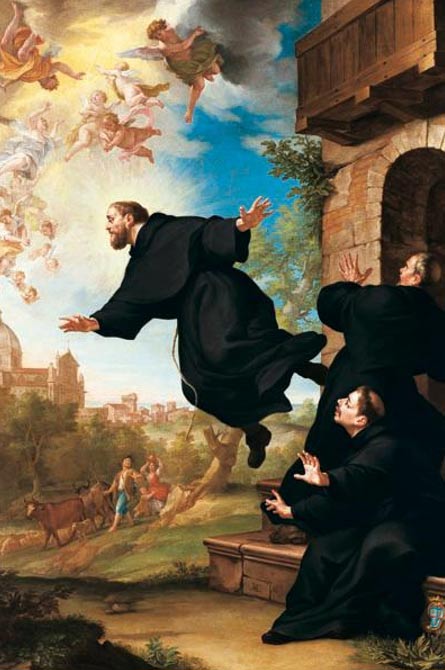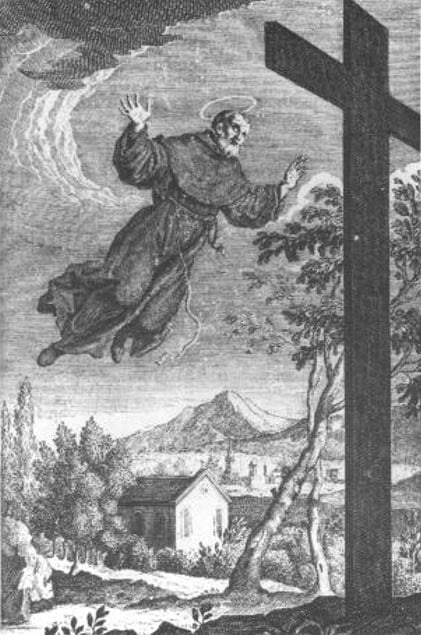Most Outstanding Case of Levitation in History, Witnessed by Multitudes: Expert Discusses
Most scholars avoid delving into historical records of levitation and other forms of psychokinesis. Dr. Michael Grosso, however, has deliberately delved in. The implications concerning human nature and its latent potential are as important to understanding our present and future as any lessons history has to offer, he said.
“It seems to me that if … any of the stories about levitation are true … they’re important for at least one major reason,” Grosso said. “They add to the evidence that renders the idea of materialism quite untenable.”
For millenia, human society had various “methods of dialogue with the divine,” he said. Within the past few hundred years, however, humanity has increasingly turned to an absolute materialism, denying anything that has not been physically measured. Yet glimpses of something more are not fanciful; they are grounded in real experiences.
“There are ways back to the poetic, magical, and transcendent dimension of human experience,” Grosso said. He received his philosophy doctorate from Columbia University and is unofficially affiliated with the Division of Perceptual Studies at the University of Virginia. He has written a book about a particular case of levitation that he said gives every indication of being genuine. He was under contract with Oxford University Press to publish the book, but his contract was terminated when he refused to tone down the claims about levitation. It will be published this year by Rowman & Littlefield under the title, “The Man Who Could Fly: St. Joseph of Copertino and the Mystery of Levitation.”
St. Joseph of Copertino (1603–1663) sometimes hovered a few inches above the ground, sometimes flew high in the air—in front of large crowds all over Italy. The church canonization process involves in-depth investigations, and thus many written records, including 150 eyewitness testimonies, providing detailed information about Copertino’s levitations.
Some people today may tend to dismiss any such accounts as the delusion of religious fervor or the backward superstitions of a relatively primitive society. But, said Grosso, “A fact is a timeless entity.”
Regarding potential objections from skeptics, he said: “It doesn’t hold water—not for 35 years, and all the witnesses that were involved. … The character of the witnesses was of the highest order—cardinals, a pope, the inquisitors themselves.”

Levitation was well documented in the case of Saint Joseph of Copertino, who was considered something of a nuisance by the Church. There is no reason to consider the church’s account fabricated. ( Public Domain/Wikipedia Commons )
The church at the time didn’t have a motive to falsely boost a performer of miracles, Grosso said. There’s no reason to believe the church records give anything other than the hard facts, he added. Copertino faced as much distrust as welcome from the church over the decades. He was moved from location to location and received vague warnings against levitating—likely because he was powerful in his ability to draw a large following wherever he went.
Copertino was even under a kind of house arrest in Rome at the same time as Galileo Galilei, albeit for very different reasons. One was a mystic, the other a driving force of modern science, both were viewed with mistrust.
The church could have easily labeled Copertino a heretic instead of a saint—it could have explained his levitation as a symptom of diabolical possession. He did stand trial. But, said Grosso, the inquisitors “could see this guy had no secret motives, he was completely humble, and he was embarrassed by his abilities.”
He did not intentionally levitate. He levitated while in a state of ecstasy. At certain points during mass, Copertino would apparently become so affected that he would enter an altered state of consciousness and begin levitating. He was oblivious to everything around him, though he caused quite a stir. It interfered with his ability to conduct masses.

Full Story at site
Most scholars avoid delving into historical records of levitation and other forms of psychokinesis. Dr. Michael Grosso, however, has deliberately delved in. The implications concerning human nature and its latent potential are as important to understanding our present and future as any lessons history has to offer, he said.
“It seems to me that if … any of the stories about levitation are true … they’re important for at least one major reason,” Grosso said. “They add to the evidence that renders the idea of materialism quite untenable.”
For millenia, human society had various “methods of dialogue with the divine,” he said. Within the past few hundred years, however, humanity has increasingly turned to an absolute materialism, denying anything that has not been physically measured. Yet glimpses of something more are not fanciful; they are grounded in real experiences.
“There are ways back to the poetic, magical, and transcendent dimension of human experience,” Grosso said. He received his philosophy doctorate from Columbia University and is unofficially affiliated with the Division of Perceptual Studies at the University of Virginia. He has written a book about a particular case of levitation that he said gives every indication of being genuine. He was under contract with Oxford University Press to publish the book, but his contract was terminated when he refused to tone down the claims about levitation. It will be published this year by Rowman & Littlefield under the title, “The Man Who Could Fly: St. Joseph of Copertino and the Mystery of Levitation.”
St. Joseph of Copertino (1603–1663) sometimes hovered a few inches above the ground, sometimes flew high in the air—in front of large crowds all over Italy. The church canonization process involves in-depth investigations, and thus many written records, including 150 eyewitness testimonies, providing detailed information about Copertino’s levitations.
Some people today may tend to dismiss any such accounts as the delusion of religious fervor or the backward superstitions of a relatively primitive society. But, said Grosso, “A fact is a timeless entity.”
Regarding potential objections from skeptics, he said: “It doesn’t hold water—not for 35 years, and all the witnesses that were involved. … The character of the witnesses was of the highest order—cardinals, a pope, the inquisitors themselves.”

Levitation was well documented in the case of Saint Joseph of Copertino, who was considered something of a nuisance by the Church. There is no reason to consider the church’s account fabricated. ( Public Domain/Wikipedia Commons )
The church at the time didn’t have a motive to falsely boost a performer of miracles, Grosso said. There’s no reason to believe the church records give anything other than the hard facts, he added. Copertino faced as much distrust as welcome from the church over the decades. He was moved from location to location and received vague warnings against levitating—likely because he was powerful in his ability to draw a large following wherever he went.
Copertino was even under a kind of house arrest in Rome at the same time as Galileo Galilei, albeit for very different reasons. One was a mystic, the other a driving force of modern science, both were viewed with mistrust.
The church could have easily labeled Copertino a heretic instead of a saint—it could have explained his levitation as a symptom of diabolical possession. He did stand trial. But, said Grosso, the inquisitors “could see this guy had no secret motives, he was completely humble, and he was embarrassed by his abilities.”
He did not intentionally levitate. He levitated while in a state of ecstasy. At certain points during mass, Copertino would apparently become so affected that he would enter an altered state of consciousness and begin levitating. He was oblivious to everything around him, though he caused quite a stir. It interfered with his ability to conduct masses.

Full Story at site
